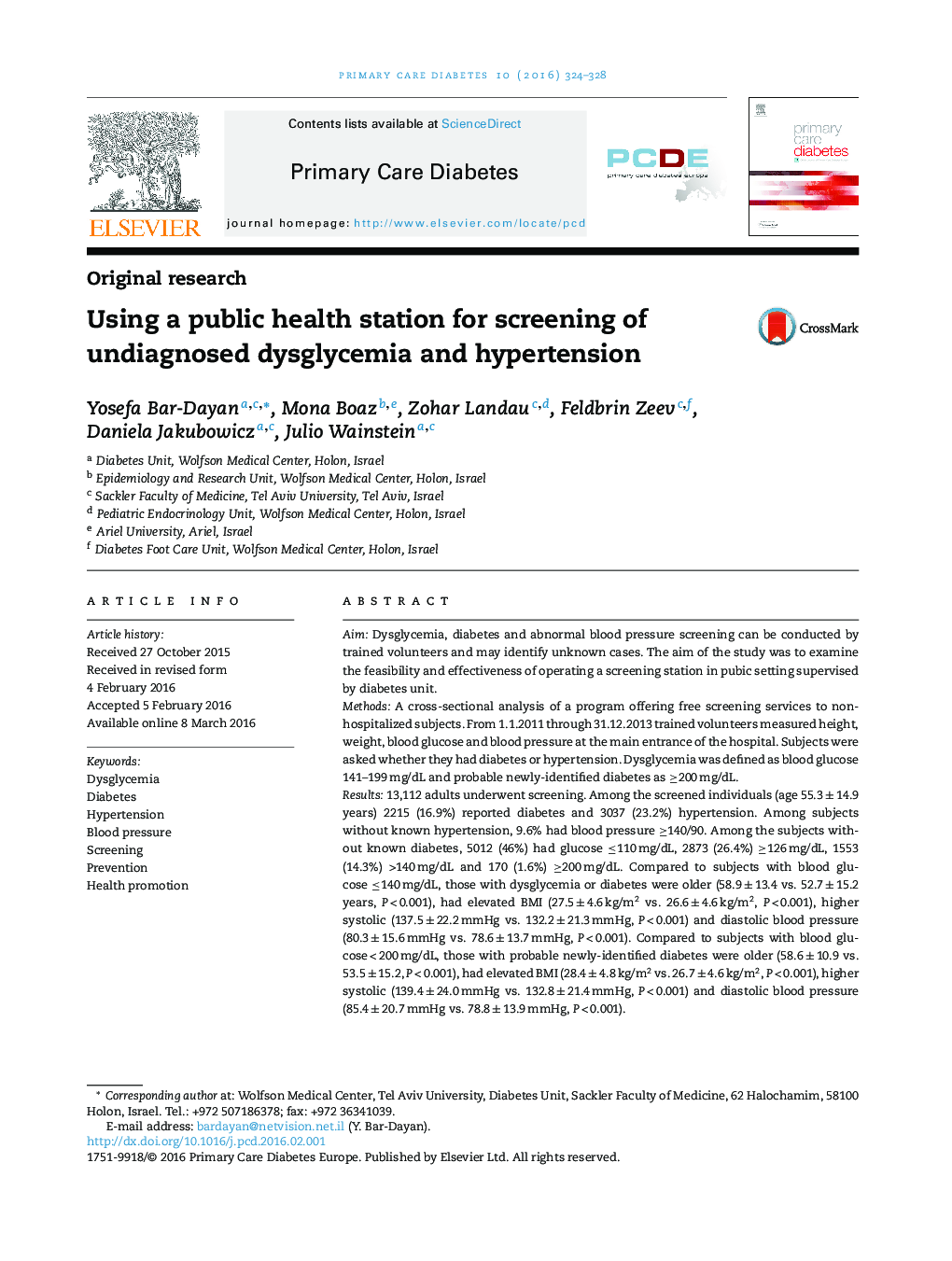| کد مقاله | کد نشریه | سال انتشار | مقاله انگلیسی | نسخه تمام متن |
|---|---|---|---|---|
| 2679000 | 1403806 | 2016 | 5 صفحه PDF | دانلود رایگان |
• Operating a supervised screening station is feasible and effective.
• The concept of a screening station relies on simple principles.
• Of the population under study 14.3% had blood glucose >140 mg/dL without diabetes.
• Of the population under study 1.6% had blood glucose≥200 mg/dL without diabetes.
• A screening station provides a window of opportunity for health promotion.
AimDysglycemia, diabetes and abnormal blood pressure screening can be conducted by trained volunteers and may identify unknown cases. The aim of the study was to examine the feasibility and effectiveness of operating a screening station in pubic setting supervised by diabetes unit.MethodsA cross-sectional analysis of a program offering free screening services to non-hospitalized subjects. From 1.1.2011 through 31.12.2013 trained volunteers measured height, weight, blood glucose and blood pressure at the main entrance of the hospital. Subjects were asked whether they had diabetes or hypertension. Dysglycemia was defined as blood glucose 141–199 mg/dL and probable newly-identified diabetes as ≥200 mg/dL.Results13,112 adults underwent screening. Among the screened individuals (age 55.3 ± 14.9 years) 2215 (16.9%) reported diabetes and 3037 (23.2%) hypertension. Among subjects without known hypertension, 9.6% had blood pressure ≥140/90. Among the subjects without known diabetes, 5012 (46%) had glucose ≤110 mg/dL, 2873 (26.4%) ≥126 mg/dL, 1553 (14.3%) >140 mg/dL and 170 (1.6%) ≥200 mg/dL. Compared to subjects with blood glucose ≤140 mg/dL, those with dysglycemia or diabetes were older (58.9 ± 13.4 vs. 52.7 ± 15.2 years, P < 0.001), had elevated BMI (27.5 ± 4.6 kg/m2 vs. 26.6 ± 4.6 kg/m2, P < 0.001), higher systolic (137.5 ± 22.2 mmHg vs. 132.2 ± 21.3 mmHg, P < 0.001) and diastolic blood pressure (80.3 ± 15.6 mmHg vs. 78.6 ± 13.7 mmHg, P < 0.001). Compared to subjects with blood glucose < 200 mg/dL, those with probable newly-identified diabetes were older (58.6 ± 10.9 vs. 53.5 ± 15.2, P < 0.001), had elevated BMI (28.4 ± 4.8 kg/m2 vs. 26.7 ± 4.6 kg/m2, P < 0.001), higher systolic (139.4 ± 24.0 mmHg vs. 132.8 ± 21.4 mmHg, P < 0.001) and diastolic blood pressure (85.4 ± 20.7 mmHg vs. 78.8 ± 13.9 mmHg, P < 0.001).ConclusionsScreening supervised by healthcare center can identify individuals at high-risk for dysglycemia and abnormal blood pressure, who are referred for further diagnosis and treatment and may serve as a complementary step in primary health care setting.
Journal: Primary Care Diabetes - Volume 10, Issue 5, October 2016, Pages 324–328
